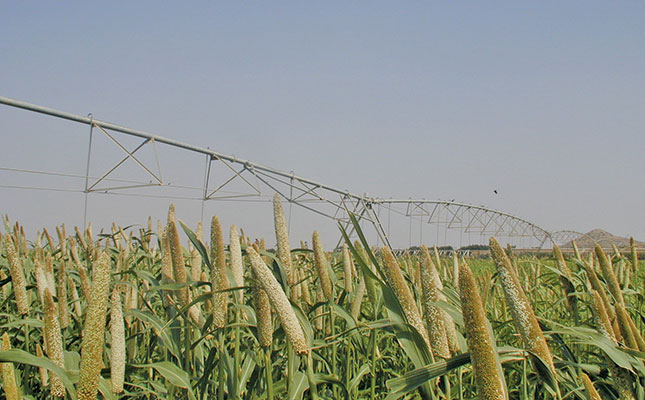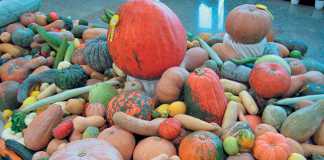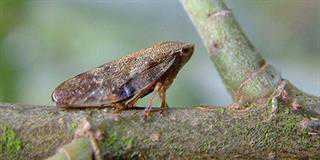
Photo: Flickr
Veld remains the cheapest source of grazing roughage, but to get the most out of it, you need to do your homework. Put simply, you can lower productivity and rangeland area if you don’t pick the right type of pasture.
Veld and grazing consultant Prof Chris Dannhauser says that many improvements to popular cultivars can help farmers produce higher yields with improved quality.
Smuts finger and weeping lovegrass
“Smuts finger grass [Digitaria eriantha] is very popular in medium- to high-rainfall areas and is adapted to a wide range of soil types,” says Dannhauser.
“It grows in most parts of North West, the Free State, Gauteng, Mpumalanga, KwaZulu-Natal [KZN] and Limpopo, in areas with more than 500mm rain per year.
“It can be planted from October to December or in February, and can be used for green grazing, hay and foggage [also called standing hay] production. Foggage is [also the practice of] grazing a summer-growing crop in winter, in the dry stage.”
The potential hay production of Smuts finger grass is 3t/ha to 12t/ha, with a carrying capacity of 0,5 to 2 LSU/ha.
Newer Smuts finger cultivars include Irene and Tip Top. According to Dannhauser, these have a seeding rate of 6kg/ha in low-rainfall areas and 8kg/ha in high-rainfall areas, and farmers following these guidelines can expect hay production of between 6t/ha and 12t/ ha, and a carrying capacity of 0,5 to 2 LSU/ha.
Agpal and PUK 436 are two newer varieties of weeping lovegrass (Eragrostis curvula), which is especially popular on the Highveld of Gauteng, Mpumalanga, the Free State and KZN, says Dannhauser. These areas have an average annual rainfall of around 600mm.
“[Weeping lovegrass] establishes itself relatively easily when planted from October to December or in February, and can also be used for green gazing and hay production. It needs a medium to high [level of] fertilisation, and becomes less palatable if not fertilised correctly.”
A seeding rate of 3kg/ha to 4kg/ha should be maintained when planting in rows.
“When broadcasting, farmers should maintain a seeding rate of 6kg/ha to 8kg/ha. For quick establishment, farmers can seed [a mixture of] weeping lovegrass at 3kg/ha and teff at 5kg/ha.”
The hay production potential of weeping lovegrass is 6t/ha to 13t/ha, with a carrying capacity of between 1 and 2,5 LSU/ha.
Buffalo and rhodes grass
White buffalo grass (Panicum maximum) is best in medium- to high-rainfall areas (over 500mm per annum), especially when planted in fertile soil. It is sensitive to severe frost, but can survive light frost.
This grass can be used as green gazing, hay and foggage, but needs a medium to high level of fertilisation. It should also be planted from October to December or in February.
New types of white buffalo grass include Gatton and Petri. The seeding rate is 3kg/ ha to 5kg/ha when planting in dryland rows. When broadcasting, farmers should seed at a rate of 6kg/ha in low-rainfall areas and 8kg/ ha in high-rainfall areas. This grass has hay production potential of 6t/ha to 12t/ha and a carrying capacity of 1 to 2,5 LSU/ha.
Blue buffalo grass (Cenchrus ciliaris) is well adapted to conditions in Limpopo and the warmer parts of North West and Mpumalanga. It is a good grazing crop in its young stage, and a good source of hay.
Popular blue buffalo grass cultivars include Molopo and Gayndah. This grass has a seeding rate of 2kg/ha to 4kg/ha in dry areas and 4kg/ ha to 8kg/ha in medium- to high-rainfall regions. Hay production is 4t/ha to 6t/ ha, while carrying capacity is 0,5 to 3 LSU/ha.
“It’s important to note that while Molopo can be grazed at a young stage, it’s a better hay crop.
As a short grower, Gayndah makes for an excellent grazing crop, but not a hay crop.”
Small buffalo grass (kleinbuffelgras; P. coloratum) and bushveld signal grass (bosveld beesgras; Urochloa mosambicensis) are both indigenous to South Africa, but were never used as planted pastures. It was only in 2015 that they became available as such, following their development for use in Australia by scientists from that country.
“Small buffalo grass is a good producer in late spring, summer and autumn as a grazing crop,” explains Dannhauser.
“It can survive rainfall levels as low as 450mm, and grows in the same areas as white buffalo grass, but not under trees. It’s drought-tolerant and also grows on saline, less fertile soils and in cool areas, but not where there’s severe frost. It’s a good grazing, hay and foggage crop, with a seeding rate of 4kg/ha in low-rainfall areas, 5kg/ha in medium- to high- rainfall areas, and 7kg/ha under irrigation.”
He adds that Rhodes grass (Chloris gayana) is also popular in western South Africa, especially in high-rainfall areas. It can adapt to saline conditions and various soil types. It is also easy to establish, forms above-ground runners, and is consequently good for erosion control.
October to December or February are ideal for planting Rhodes grass.
“Its lifespan is shortened when overgrazed. However, it can be used for green gazing, hay and foggage production, and requires medium fertilisation.”
Rhodes will produce 4t/ha to 12t/ha hay, and its carrying capacity is 0,5 to 2,5 LSU/ha. Its seeding rate is 4kg/ha to 6kg/ha in rows in areas with low rainfall, while 6kg/ha to 8kg/ha is needed when broadcasting in high-rainfall areas.
Katambora is a Rhodes grass cultivar used worldwide. It has a hay production potential of 4t/ ha to 12t/ha, a carrying capacity of 0,5 to 2 LSU/ha, and a seeding rate of between 5kg/ha and 7kg/ha.
The Finecut and Reclaimer varieties were developed in Australia and have been available in South Africa since 2015/16.
“Research in KZN and North West on Katambora, Finecut and Reclaimer showed successful establishment,” says Dannhauser. “Hay of the three cultivars was fed to cattle to test their preference, and over 14 days the selection and intake were as follows:
Finecut 41%, Reclaimed 32% and Katambora 27%.”
Fodder sorghum
According to Dannhauser, fodder sorghum (Sorghum bicolor) is adapted to most soils and grows well in areas with rainfall of over 500mm. It can be used as green grazing, green chop, hay, foggage and silage, and needs a medium to high level of fertilisation.
Fodder sorghum should be established in October in warm areas and November or December in cooler areas. Three to four cuttings or grazing cycles are possible.
Dannhauser advises farmers to start grazing cattle when the grass is 70cm to 100cm tall, while sheep can be grazed from when the crop is 50cm tall.
“There are four more recent [fodder sorghum] cultivar hybrids [see Table 1] that farmers should consider when deciding which will be best for their livestock enterprises,” he says.
Sorghum x Sudan grass hybrids include most of the older cultivars, such as Trudan, Hidan and Kow Kandy. Some of the newer cultivars are higher producers and more suited to grazing, hay and silage. The sweet sorghum x sweet sorghum hybrids include cultivars that mature late in the growing season and produce high yields of high-energy crops because of the higher sugar content. They are usually used for silage production or standing hay, which can be grazed in winter and early spring.
According to Dannhauser, brown midrib (BMR) sorghum x sweet sorghum hybrids are lower in fibre in their leaves and stems, making them more palatable and digestible.
Lastly, there are the BMR sorghum x Sudan grass hybrids.
“These cultivars are related to the sorghum x Sudan grass hybrids, but have a lower fibre [content] and better digestibility. They can also produce good hay and silage.”
Fodder sorghum has a seeding rate of 20kg/ ha to 25kg/ha under irrigation or in areas that get more than 700mm of rain per year. In medium-rainfall areas (450mm to 600mm) the seeding rate is about 12,5kg/ ha, and in dry areas (less than 450mm) it is 8kg/ha.
Pearl Millet
Pearl millet (Pennisetum glaucum), also known as babala, is a drought-resistant annual fodder crop. It has been adapted to most areas in South Africa with a rainfall of over 400mm.
“It is widely used, even in rural areas,” says Dannhauser. “It can be used as green grazing, hay and silage, and its grain can even be eaten by people.”
Traditionally, only open-pollinated types were used and ‘common’ babala was the only cultivar available, but hybrid cultivars with a higher production volume and better characteristics entered the market recently. They include Hypearl Millet (HPM), Speedfeed, Milkstar, Nutrifeed and HPM BMR.
“Combined with annual legumes, such as cowpeas, it produces good forage. The newer hybrid cultivars also have better regrowth abilities.”
The production of common babala and five newer cultivars were recently tested under two different rainfall systems (see Table 2).
“These hybrids germinate and regrow quickly and can be grazed in 40 to 50 days after planting,” explains Dannhauser. “They have extended root systems, making them drought-resistant and able to supply organic material to the soil.”
These millet cultivars do not produce Prussic acid and are safe to graze even at a young stage.
“HPM has a seeding rate of 3kg/ ha to 5kg/ ha in dry areas, 6kg/ ha to 10kg/ ha in higher rainfall areas, and 10kg/ ha to 15kg/ha under irrigation.” If farmers stick to these guidelines, they can expect a grazing capacity of 1 to 2,5 LSU/ha.
Phone Prof Chris Dannhauser on 082 873 4736, or email him at [email protected].













